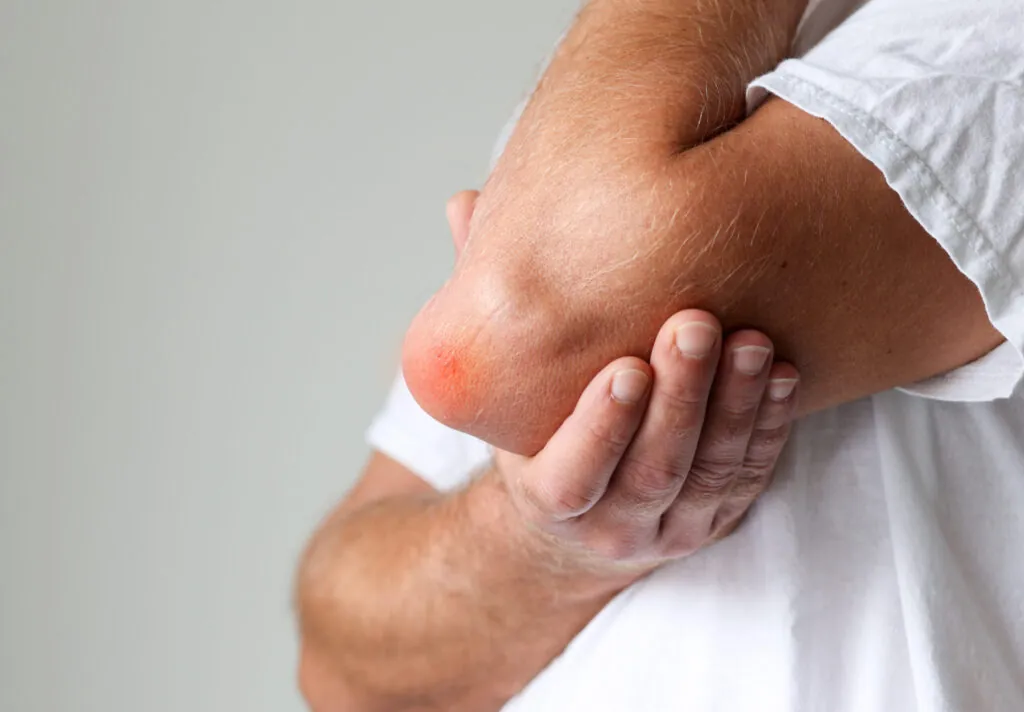Bursitis is a term commonly used to describe joint pain and inflammation, especially in active adults and older populations. While the word gets thrown around a lot in both clinics and online, recent studies suggest that true bursitis is less common than you might think. According to estimates from the American Academy of Orthopaedic Surgeons, about 8.7 million people in the United States are affected by bursitis each year, but a large percentage of joint pain that gets labeled as “bursitis” turns out to have different underlying causes. This blog will clarify what bursae are, where they’re found, what bursitis feels like, and why pain in these areas is more complicated than it first appears. We’ll also review the latest research on diagnosis and the most effective treatments.
What is Bursitis, and Where Does It Occur?
A bursa is a small, fluid-filled sac found in many parts of the body, most commonly around major joints like the shoulder, elbow, hip, and knee. The primary role of a bursa is to act as a cushion, reducing friction between tendons, muscles, and bones during movement. Your body contains over 150 bursae, each strategically located where friction might otherwise cause tissue damage.
Bursitis refers to the inflammation of one of these sacs. This inflammation can result from repetitive motion, direct trauma, prolonged pressure, or sometimes infection. The most frequently affected sites are the shoulder, elbow, hip, and knee.
Bursitis Symptoms

The main symptom of bursitis is localized pain around a joint, especially with movement or pressure on the area. Some people may also notice swelling and warmth. Pain is often worse with activities that compress the bursa like kneeling with (knee) or lying on your side (hip). In some cases, the joint may feel stiff or achy even at rest.
However, it’s important to note that these symptoms are not unique to bursitis. Many other causes such as tendon injuries, muscle strains, and arthritis can cause similar around the same areas.
Bursitis Causes: Why It’s Rarely “Just the Bursa”
While the diagnosis of bursitis is common, research shows that true bursal inflammation is actually rare. One study examined a large number of cases of lateral hip pain using ultrasound imaging. The study found that 80% of patients with pain in this region did not have any evidence of bursitis on imaging. Instead, most had pathology involving the gluteus medius and minimus tendons or the iliotibial band.
This finding isn’t limited to the hip. Inflammation in other areas that gets labeled as “bursitis” often turns out to be tendon-related or even due to arthritis. Bursae do not exist in a vacuum; they are closely surrounded by muscles, tendons, and ligaments. Pain in these regions can come from any of these tissues, or sometimes a combination. It can be very difficult to determine the exact source of pain based on symptoms alone. True bursitis can only be reliably diagnosed through imaging, such as ultrasound or MRI, which can detect fluid or thickening in the bursa itself.
How is Bursitis Treated?

Treatment for suspected bursitis usually begins with conservative management. Activity modification and physical therapy is the first line of defense which can include manual therapy, stretching, and targeted strengthening exercises to treat the affected bursa.
If pain persists or inflammation is severe, a doctor may recommend medications such as NSAIDs (non-steroidal anti-inflammatory drugs) or, in some cases, an ultrasound-guided corticosteroid injection directly into the bursa. In very rare instances where infection is suspected (septic bursitis), aspiration and antibiotics may be necessary.
Most cases resolve with conservative care and don’t require advanced measures. Your physical therapist will help you gradually return to normal activities and teach you strategies to prevent recurrence, such as modifying repetitive movements, improving strength, and addressing any other deficits.
Final Thoughts
While bursitis is a well-known cause of joint pain, it’s not as common as you might think. Most joint pain labeled as “bursitis” actually involves nearby tendons or muscles rather than the bursa itself. Accurate diagnosis is key to guiding proper treatment. The good news is that most people recover well with physical therapy and conservative management, without the need for invasive procedures.
Find a PT Clinic Near You!
If you are struggling with stubborn joint pain or have been diagnosed with bursitis, a physical therapist can help you identify the real cause and create a plan to get you moving pain free again.


